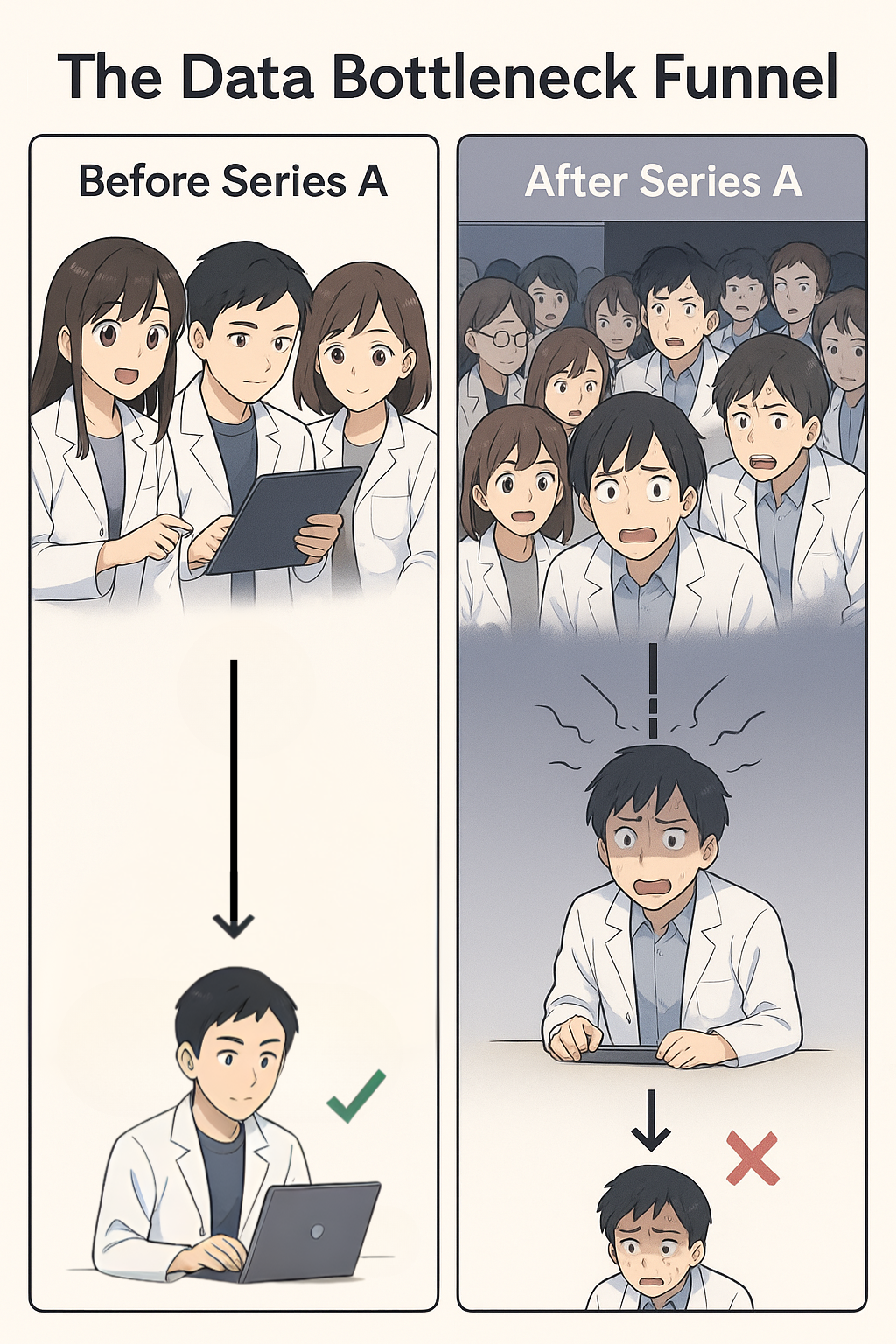October 23, 2025

You might be heading into a data crisis if:
→ Your scientists spend 4+ hours per week on routine data tasks (compiling reports, finding files, waiting for someone else)
→ The same question gets asked to your technical person 3+ times per week
→ One person is the bottleneck for all data access or analysis
→ Onboarding new scientists takes 2+ weeks before they can independently access their own data
→ You’re making hiring decisions based on data bottlenecks rather than scientific needs
If you checked 2 or more, you’re already feeling it. At 3+, you’re in the trap.
𝗛𝗼𝘄 𝗜𝘁 𝗛𝗮𝗽𝗽𝗲𝗻𝘀
You close Series A. Team doubles overnight. Suddenly that one technical person who “handled everything” is drowning. Scientists who used to run their own analysis now have backlogs. All of the sudden, the funding celebration turns into a data crisis within 6 months.
The problem isn’t lack of talent. It’s three decisions that seem logical at the time:
“We’ll hire data people later” You focus on science first. Makes sense, right? Except by Series B, scientists spend 8+ hours weekly on manual reporting. You’re building infrastructure while running at full speed.
“Let’s buy an enterprise platform” You invest 6 figures in software built for 200-person companies. Your 15 scientists can’t actually use it. Everyone goes back to spreadsheets.
“We’ll standardize once we’re bigger” Six months later, three people run the same analysis three different ways. Nobody knows the source of truth. Onboarding takes weeks because everything is tribal knowledge.
𝗪𝗵𝗮𝘁 𝗔𝗰𝘁𝘂𝗮𝗹𝗹𝘆 𝗪𝗼𝗿𝗸𝘀
Companies that scale smoothly do three things:
→ Identify their biggest bottleneck and solve it first with a targeted tool
→ Create just enough process to prevent chaos without slowing science
→ Build systems that make both scientists and technical teams look good
The goal isn’t perfect data infrastructure. It’s removing obstacles that keep brilliant scientists from doing brilliant science.
Start small. Pick one bottleneck. Build one self-service tool. Free your team from one repetitive task.
That’s how you avoid the trap—one strategic decision at a time.
Have you experienced the Series A data crunch? What was your biggest bottleneck when your team doubled?



